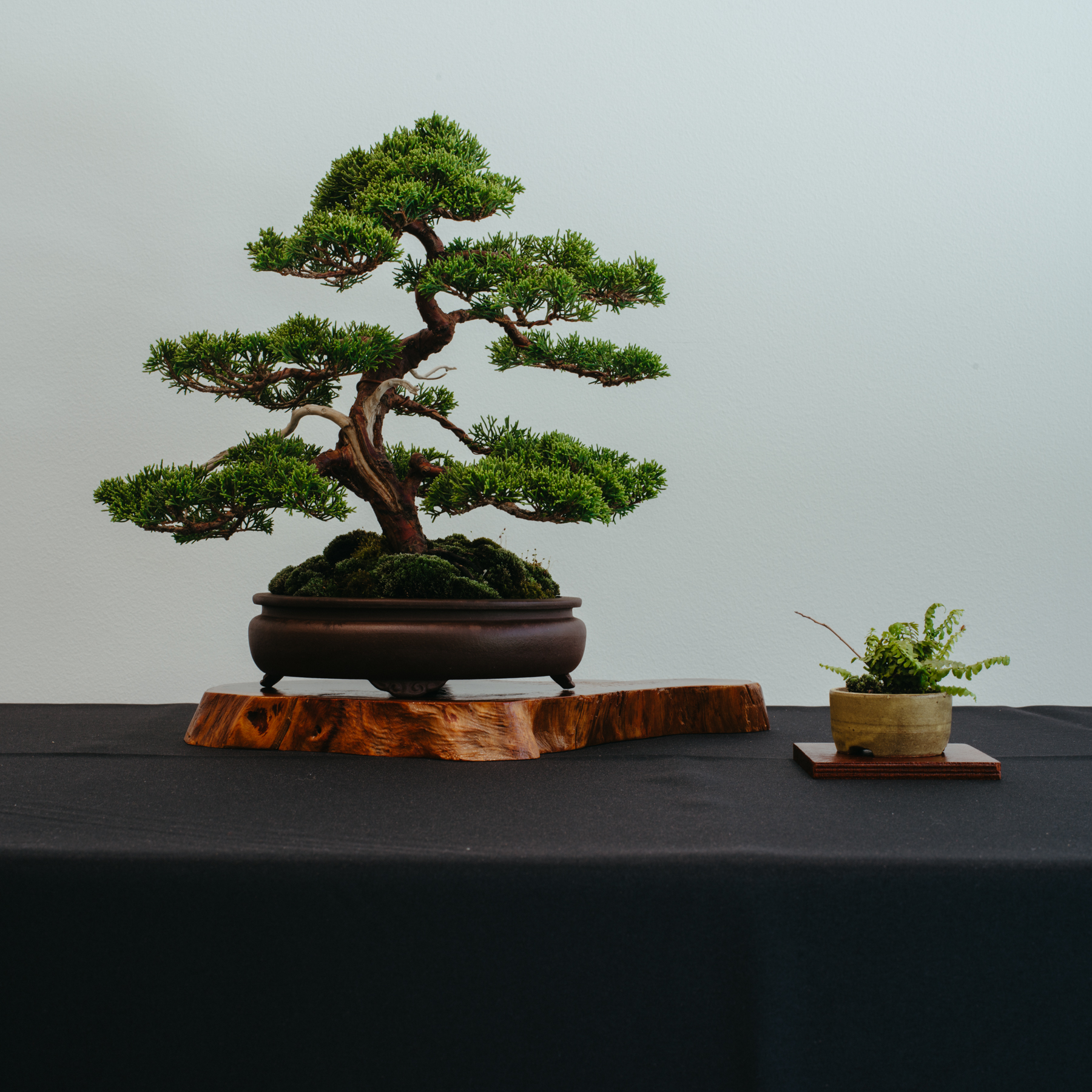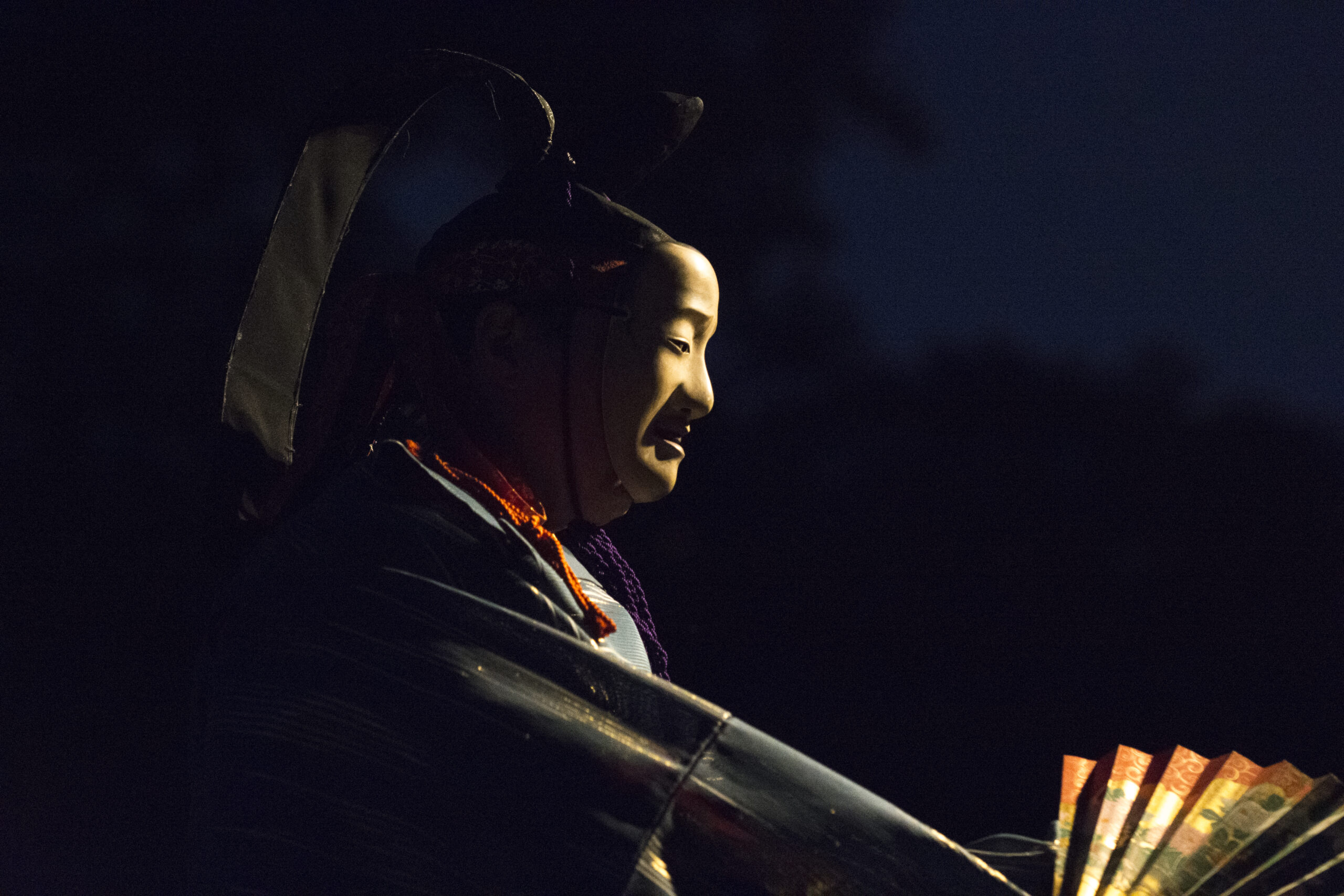
People’s Choice Award – Hinoki Cypress. Photography by Bradley Spitzer
Featured Image above: Photography by Bradley Spitzer
Walking through a miniature magical living forest of meticulously manicured bonsai trees stops you in your tracks in a most fascinating way.
In July, Cheekwood’s Massey Hall was filled with more than 50 pristine potted dwarf plants – an intriguing sight, offering a diorama-like view of dynamic and exotic specimens, from deciduous to conifers and even tropical trees.
After an impactful first impression of so many beautiful bonsais in one place, it’s only natural to want to learn about and get a closer look into the fascinating world of bonsai.
The Nashville Bonsai Society (NBS) welcomes all levels of bonsai tree enthusiasts to their show, from novices to those who have passed trees through generations of family members over many decades. It’s an annual affair, but this was the NBS’ first time hosting a Statewide Bonsai Show, featuring 56 judged displays of bonsai specimens from Memphis, Nashville, Chattanooga, and Knoxville Bonsai Clubs. In addition to the stunning displays, there were live demonstrations, workshops, and vendors offering trees, stones, pots, and accents.
Bonsai history is rich, steeped in tradition and technique, and the practice is complex. There’s a lot to appreciate and learn. “Ultimately, it’s just really fun,” says Sara Hopson, President of the Nashville Bonsai Society.
“It’s like a representation of nature in miniature,” she says. “You’re actually trying to imitate nature, so the closer you can reflect in a small container what you see in nature, that’s kind of the whole essence of the art and everything that comes with it.”
In Japanese bonsai, the emphasis is on the tree. The viewing stones, accent plants, and other elements are all to enhance the tree – nothing is to take away from it. The passion that drives bonsai gardeners is not only enjoying the horticultural practice, but also having a genuine affinity for Japanese culture, history, innovation, and the community.
“We refer to ourselves as ‘treeple,’” Hopson says of the 130 active members in Nashville’s Bonsai club. In 2025, the gardening friends who make up Nashville Bonsai Society are celebrating 50 years since the club was founded in 1975.
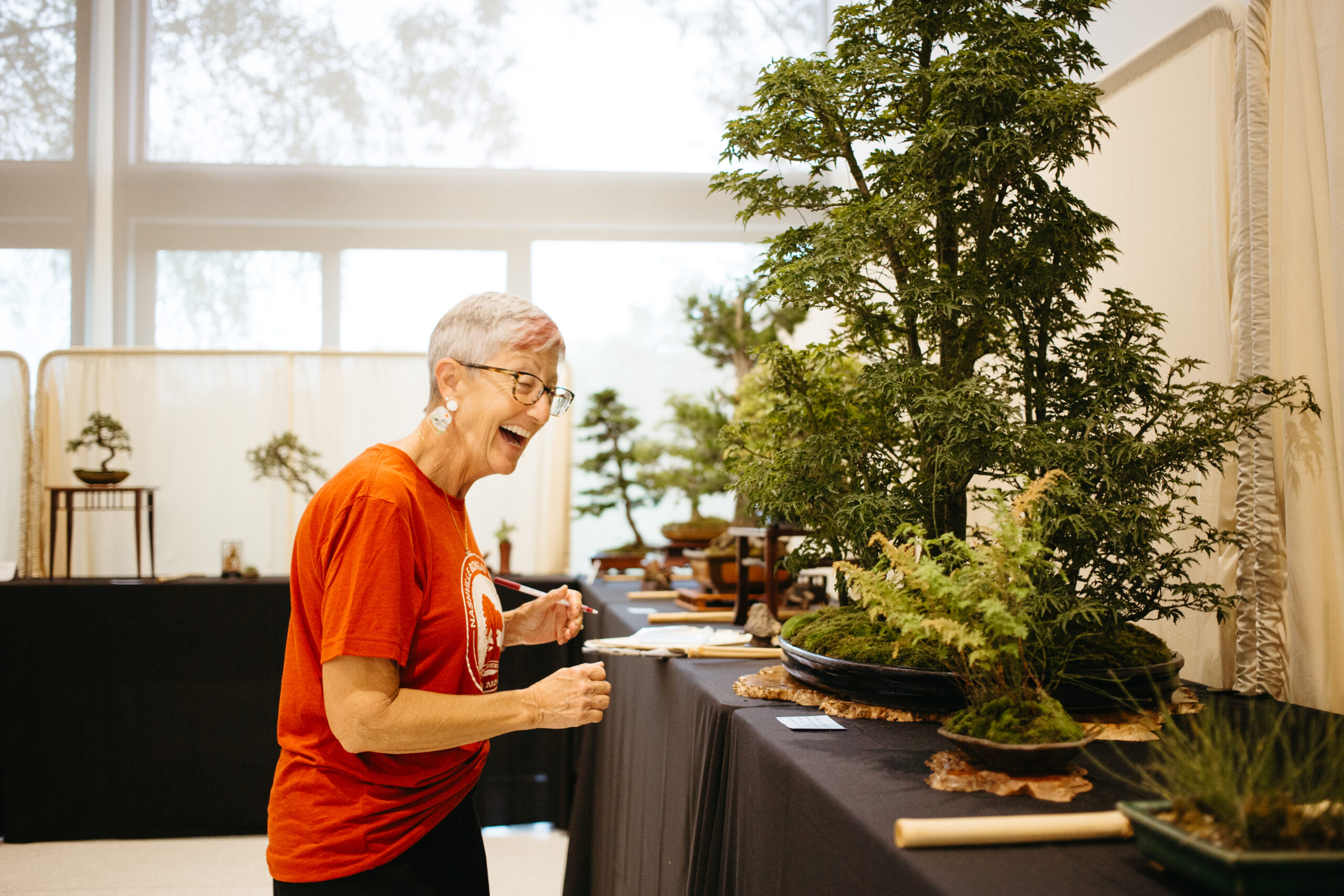
Sara Hopson, President of the Nashville Bonsai Society. Photography by Bradley Spitzer
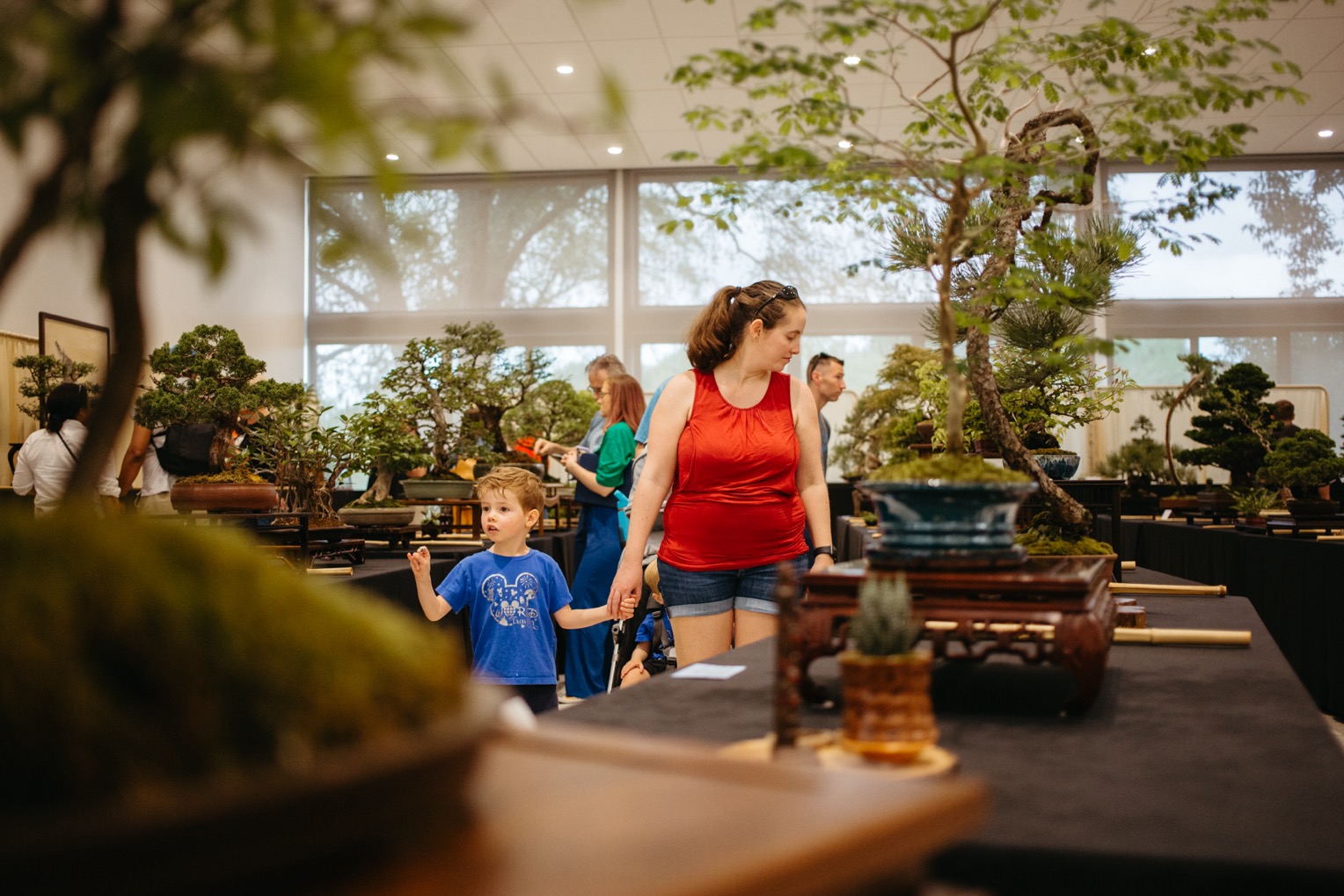
Photography by Bradley Spitzer
The term bonsai translates to dwarf trees in a container, using a tray-planting method for growing. The origins of bonsai technique date back thousands of years, anywhere from 4 to 700 BCE. Initially it developed as a native tradition integral to the Chinese Empire. The Chinese practice penzai imitated entire landscape scenes in nature in a controlled environment. The tradition later reached Japan through war times, and Japan embraced the art of bonsai and innovated it to incredible levels, with a focus on the tree. The technique was introduced to the West much later, in the 1940s after World War II.
Japanese horticulture is generational, with family elders passing trees and knowledge to younger members. It’s part of daily life. The local Nashville club embodies these traditions. Hopson first took up the hobby with her adult son in 2017 as a refreshing way to spend time together. Club member Carolyn Evans, whose father was a founding member of the Nashville Bonsai Society, inherited his extensive collection and presides over the care of his trees as well as her own. At this year’s show, Evans won the “Best Deciduous” award for her Chinese Elm.

Best Deciduous Award, Chinese Elm with Carol Evans
Photography by Bradley Spitzer
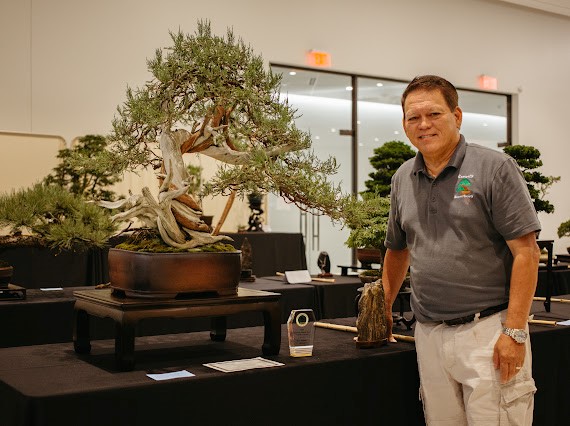
Best Display Award, Rocky Mountain Juniper with Dat Tran
Photography by Bradley Spitzer
A tree in a pot may sound simple, but the work put into maintaining a bonsai is not. Keeping bonsai trees alive and thriving takes extensive dedication, cultivation, and a certain level of horticultural knowledge of bonsai shaping, aesthetics, pruning, wiring, and repotting. An interesting fact to keep in mind: Bonsais are not genetically dwarfed, so any tree species can be used.
At Cheekwood’s 2024 Bonsai show, judge Brussel Martin of Brussel’s Bonsai Nursery in Olive Branch, Mississippi, gave a pruning demonstration and shared some fundamental tips for the bonsai-in-training. For those who are looking to pursue this hobby, Brussel’s four basic guidelines are charmingly accessible.
Brussel Martin’s Bonsai Proverbs:
- “Cut the tips, that’s where you create energy.”
- “It’s hard to overwater, err on the side of more.”
- “Morning light, afternoon shade.”
- “Straight tree, short life. Crooked tree, long life.”
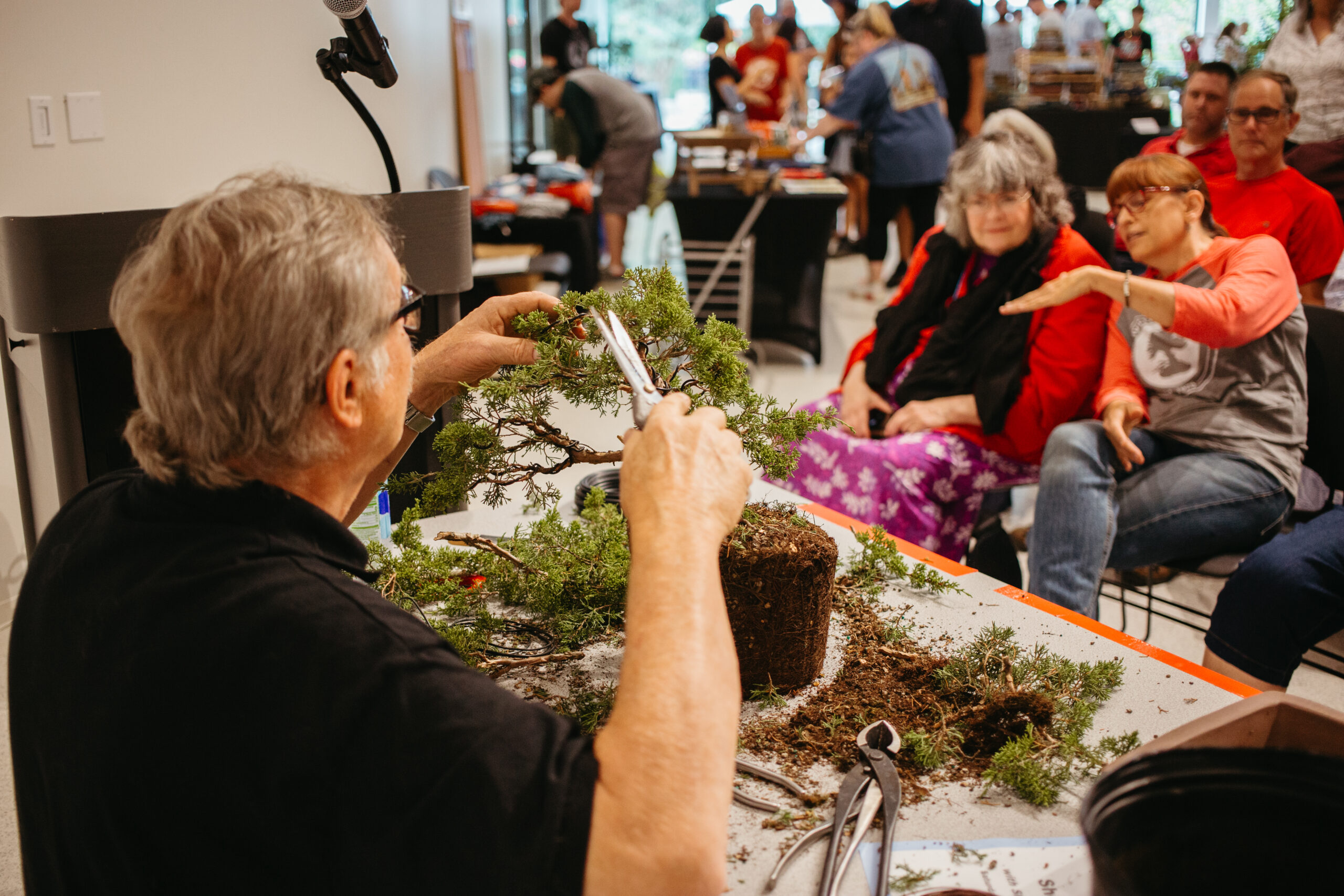
Brussel Martin gives a bonsai demonstration.
Photography by Bradley Spitzer
Of course, this is only the beginning. There is endless knowledge to glean in the craft of bonsai, and the only bounds are your own imagination.
On September 15, the Nashville Bonsai Society comes together again at Cheekwood for the annual Japanese Moon Viewing Festival, Otsukimi.
Set in Cheekwood’s gardens, the special event celebrates Japanese culture, art, and horticulture. The Nashville Bonsai club displays trees at the event, gives pruning demonstrations, offers beginner bonsai workshops, and hosts kids’ activities. “We love giving back to the community,” Hopson says. “It’s such an inclusive day with so many activities going on. It is an outstanding event.”
At last year’s Japanese Moon Viewing, Nashville’s Consul-General of Japan, Shinji Watanabe, personally thanked the Nashville Bonsai Society for bringing an authentic touch to Otsukumi at Cheekwood.
“That was really a special moment for me,” Hopson says.
Next month, Nashvillians can experience the living art of bonsai in a one-of-a-kind setting under the Harvest Moon.
